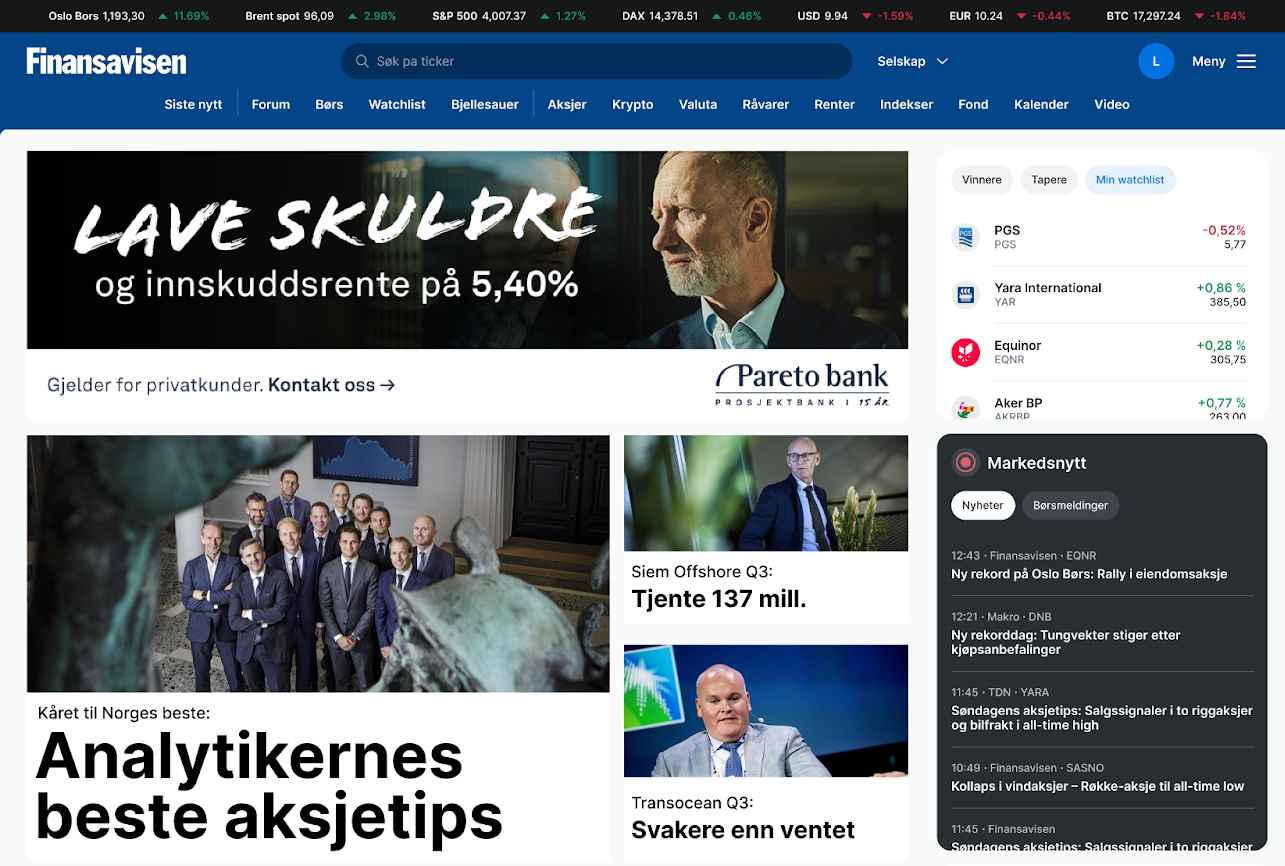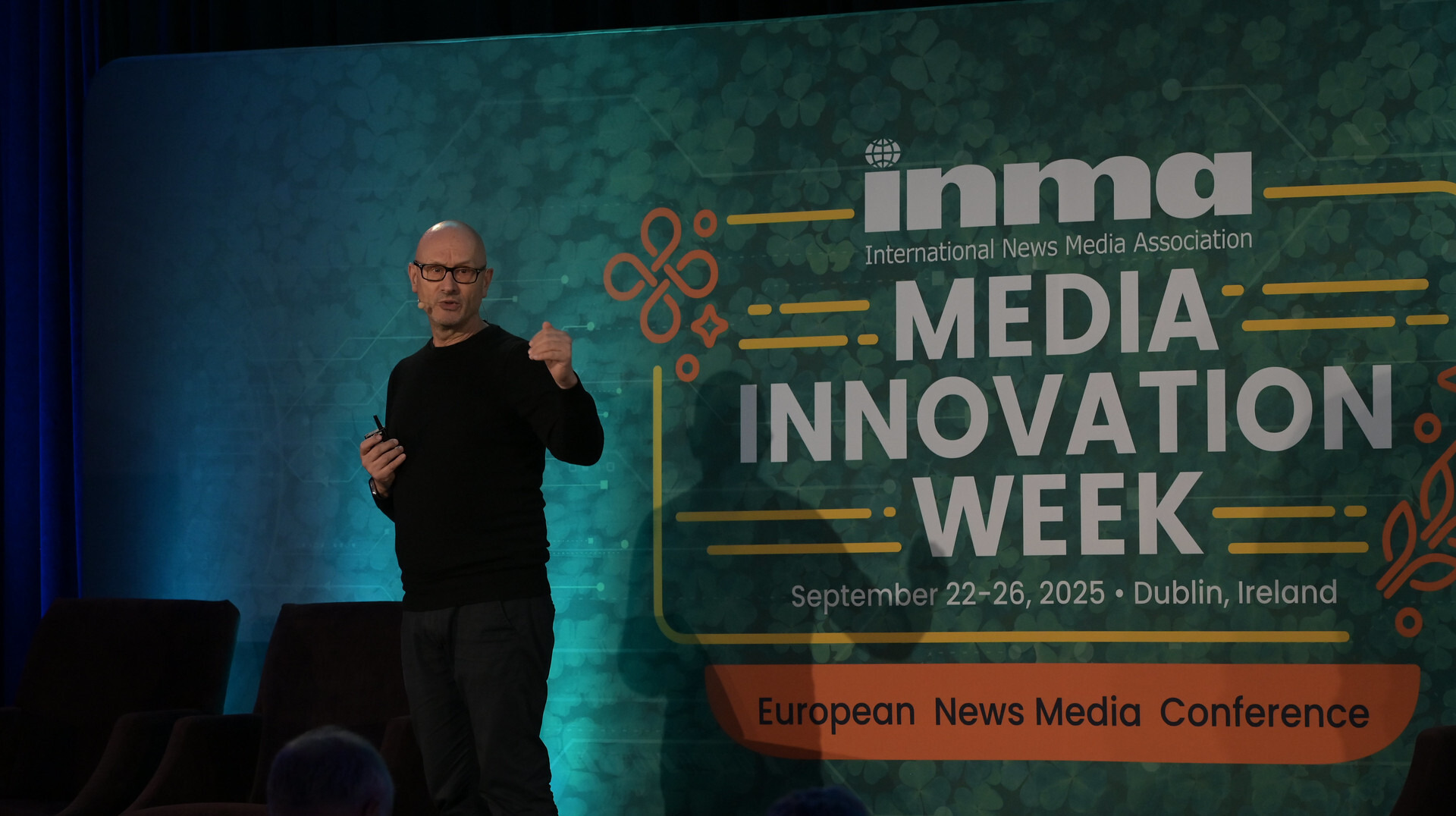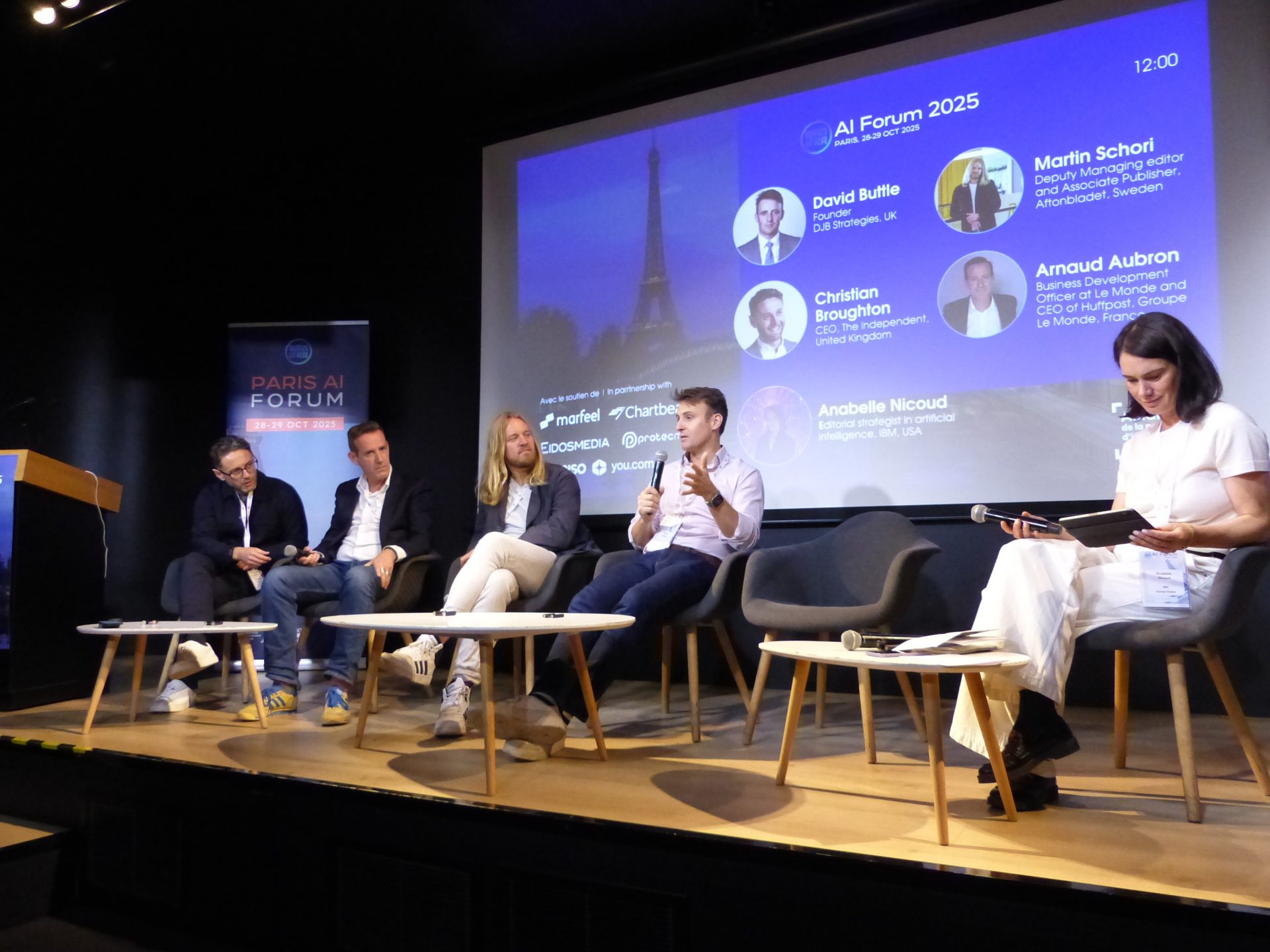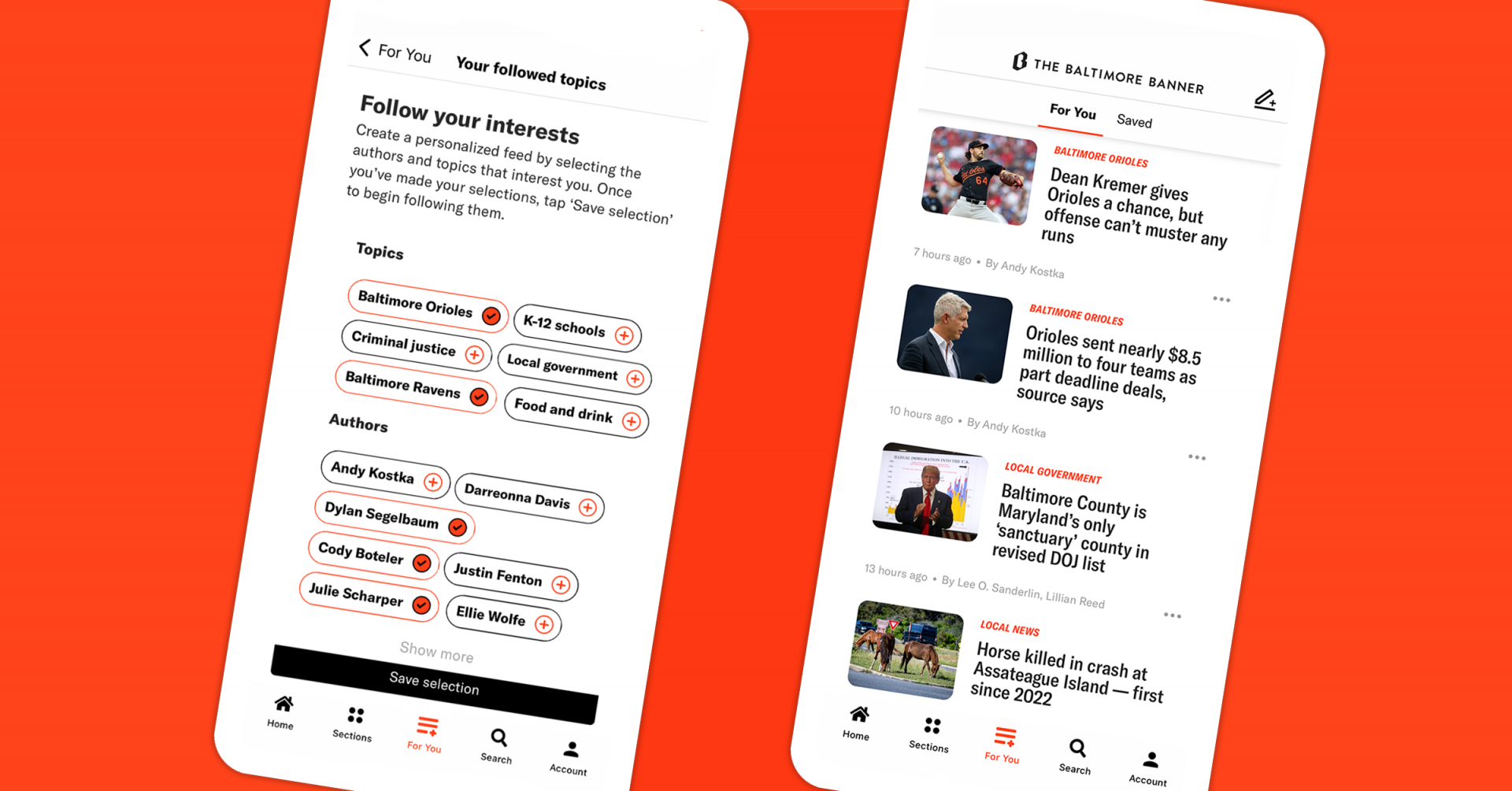
Newsletter
Newsletter
Publishers are looking at how they can embrace AI, strengthen audience relationships and evolve fast to stay ahead in a transforming media landscape.
20th October 2025

A couple of weeks ago the Pugpig team went to Dublin for INMA’s Media Innovation Week, where the spotlight was on how publishers can adapt and grow in a fast-changing landscape. Key themes included turning AI into a genuine growth driver, building stronger direct relationships with audiences and finding ways for advertising and subscriptions to work hand in hand. There was also a strong message about protecting brand and editorial quality as AI reshapes the industry.
The discussions were upbeat and full of ideas, but there was also a clear sense that change can’t wait. INMA CEO Earl Wilkinson opened the conference with a stark warning: “If we don’t go faster in changing, this is existential. We have a couple of years or we will be dead.” Today we’re diving into the main themes from the event, exploring how they connect to the conversations we’re having with publishers and what the industry needs to do to keep evolving.
It’s no surprise that AI transformation dominated the week but what stood out was how the approach has evolved, moving from cautious experimentation to broader adoption across newsrooms. While there were understandable concern about how AI-driven search is impacting traffic, there was also genuine optimism about the opportunities.
The Irish Times have exemplified this shift as they’ve moved from cautious pilots to compulsory AI training across departments. With their digital-only brand, Breaking News, they have tested features that can be rolled out across other titles. This has allowed them to run successful tests for AI summaries, audio wraps and personalised catch-ups.
At the event, one of the most forward-looking sessions delved into “agentic AI”, systems that don’t just generate content but carry out complex, outcome-driven tasks. Robert Whitehead described how we’ve moved from the search era, through the answer era, and into what he called “the action era,” where AI agents don’t just inform but act. He highlighted that the new “table stakes” for AI now include chatbots, dynamic paywalls, personalisation, multimodal content transformation and print automation.
Robert suggested that, when used effectively, agentic AI allows smaller newsroom teams, supported by multiple “super helper” agents, to achieve far greater productivity and coverage. The impact on how publishers organise themselves could be transformative. As NZZ’s Lukas Görög observed, “we might soon see a multi-million media company run by two people, because you still need an accountant at the end of the day”.
The action era requires publishers to rethink their business models. While AI offers huge opportunities, the way audiences consume and interact with news is changing fast. Many discussions at the event focused on how publishers can make the most of this moment to evolve their revenue strategies.
A standout insight came from INMA’s Greg Piechota and Gabriel Dorosz. They argued that publishers don’t need to choose between advertising and subscriptions. Instead, they urged publishers to focus on “super users” who engage deeply with both. Backed by INMA data, the pair showed that while only 2% of a typical publisher’s website visitors are subscribers, those readers account for 15% of all sessions and 27% of total page views, proving the powerful link between subscription and advertising engagement. As Gabriel put it, “subscriptions and advertising are not rivals, but rather two wallets of the same super user.”
The event also explored how publishers can tap into new technologies and media formats to offer smarter pricing and more diverse products. In one session, Janne Tuominen, Director of Subscriptions at Aller Media Nordic, shared how the company used Mather’s Intelligent Pricing to power a personalised renewal model. The tool applied predictive modelling to set tailored renewal prices for each user, with Aller running A/B tests to measure the impact. The results were impressive. They raised the ceiling price of subscriptions by up to 32% and generated nearly four times the incremental revenue.
Revenue conversations also went well beyond traditional models. One example came from The Irish Independent who launched their Indo Sport podcast series last September with a bold marketing campaign showcasing presenter Joe Molloy, even taking the promotion to the “sides of buses.” As Cormac Bourke, Editor-in-Chief of Mediahuis Ireland, said, the mantra was “go big or go home.” While podcast monetisation can be challenging, The Indo’s sponsorship-led approach has allowed the series to become profitable.
The conference made it clear that traditional distribution channels are struggling to reach younger audiences. Journalist and creator Sophia Smith Galer pointed out that “when it comes to reaching big audiences and finding people who’ve never heard of you, traditional platforms are hopeless.” Her message to publishers was simple: adapt or be left behind. She urged news organisations to rethink how they create content, either by developing their own reporters into journalist-creators or by partnering with established creators who already have engaged communities. Both paths, she noted, demand cultural change, new training and investment in the right infrastructure.
Many publishers also shared how they’re reinventing their platforms to connect with younger audiences and compete with social media, often by embracing new formats built for mobile. Carlotta Richter, Deputy Head of Social Media at Funke Media Group, and Smilla Luise Schwoerer, the company’s Business Development Manager, challenged the idea that young people aren’t interested in news. “Young audiences want news,” they said. “They just want it on their own terms.” That means using authentic voices and focusing on building long-term trust over chasing quick hits, through formats like podcasts and vertical video.
Similarly, Lena Leibetseder, Head of Digital Publishing at Russmedia Digital, shared a case study which showed how this can work in practice. She presented VOL.AT Shorts, which are short-form vertical videos featured directly on the homepage. The results after launch were impressive, with more than 1.3 million views and 505,000 unique users, surpassing their regional population.
What distinguished this INMA conference was its sense of urgency. Publishers have limited time to reimagine their operations, revenue models, and audience strategies. Those who succeed will build direct, profitable relationships with engaged communities. Those who don’t risk struggling in an AI-saturated media landscape.
The transformation window is closing rapidly. The question isn’t whether to change, but how quickly publishers can seize the opportunity to shape a more innovative, resilient future.
Here are some of the most important headlines about the business of news and publishing as well as strategies and tactics in product management, analytics and audience engagement.

Newsletter

Newsletter

Newsletter

Newsletter